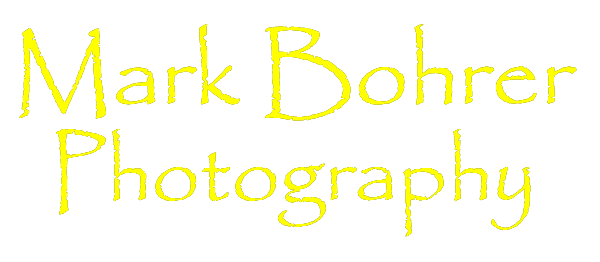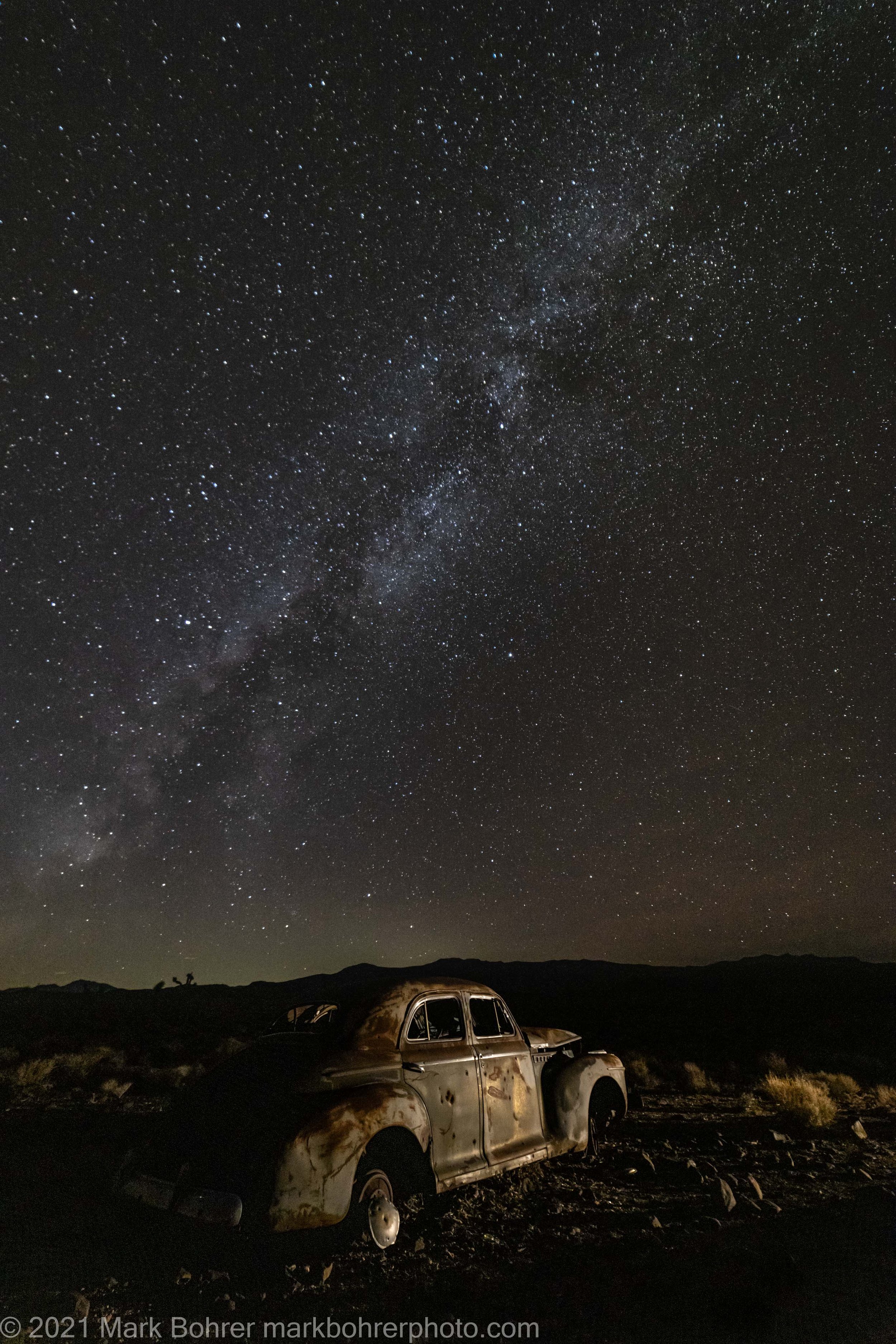The Old Car and the Milky Way
The message came via WhatsApp. “Meet in the same spot at 12:30 to go out for sunset. We should be able to eat at the Panamint Restaurant. But bring some food just in case as we’ll be shooting stars after sunset.”
The old car
It was day three of Action Photo Tours’ workshop in Death Valley. We’d been up and out by 5am most days for sunrise shooting and out again at sunset at some of the park’s signature viewpoints. But tonight’s shooting was about Joshua trees, a rusted old car with bullet holes, and the Milky Way.
Heading for Jets and Night Skies
We drove the occasionally twisty and cliff-edged road from Furnace Creek through Stovepipe Wells and Panamint Springs, then stopped at Rainbow Canyon for possible military jet fly-unders below the canyon rim. We didn’t get lucky – there weren’t any jets when we stopped and waited. But they don’t fly to a schedule, so it’s hard to know when they’ll be there. We drove on to stop just outside the park border.
Action Photo Tours’ Kevin McNeal and Nicole Tino led us a short distance to the old car, in a plateau scattered with Joshua trees. With the desert’s limited water, plants adopt a uniform distribution with the big ones widely separated. More or less distant mountains rose in all directions, with a canyon dropoff to the east. The sky was almost painfully blue and clear ahead of sunset.
Steering wheel, console and no glass
Planning for Joshua Trees – Shooting The Old Car
The initial plan was to find solo Joshua trees for pictures against mountain backgrounds in sunset light. I stuck with the old car instead, trying for some closeup detail (what was left of it, anyway) along with overall landscapes. You could still see the radio console and steering wheel, and there were groups of four fake exhaust accents on each side of the car. There were only a few shards of glass left in the windshield and windows. The metal around the bullet holes was just as rusted as the rest of the car, so it must have been shot at awhile ago.
After a friend’s tentative ID later (thanks Tad), I confirmed the car was a 1941 Buick Super. The groups of exhaust accents should have been a giveaway – modern Buicks still have them.
Fake exhaust accents
Around 3 o’clock there was a roar as an F-22 whipped around the mountains. A couple people went back to Rainbow Canyon with Nicole to try for some pictures, but the jets were just too fast.
1941 Buick Super and sun diffraction
Joshua tree and pink sky
Towards sunset, most of us were at the old Buick. I made some final shots of the car with the sun diffracting across the trunk, and Joshua trees in pink post-sunset light.
Backpacks and most photo gear were left at the site. Then we all walked back to the cars to wait for full dark.
Leave the gear behind…
By headlamp light around 8 o’clock, we made our careful way back out to the Buick. Kevin and Nicole carried LED lights to ‘paint’ the old car. All of us mounted cameras to tripods with our night photography lenses. For me this was a reasonably lightweight Rokinon 14mm f/2.8 AE manual focus lens. If I’d planned better I’d have brought a sharper but much heavier Sigma 14mm f/1.8 Art lens I’ve used before for night sky shots. But I wasn’t sure how much I’d have to carry without a break, so I left the Sigma lens home.
Light it up!
Shooting At Night
It’s almost impossible to use autofocus for night shots. There’s usually not enough light to focus on. Even if you autofocused on a temporarily lit area, as soon as the light moves away your focus shifts. So you’re going to be manually focusing for night shots.
Kevin showed us the Gap method for focusing – he stood by the car, well lit by LED light with his Gap sweatshirt on, and we adjusted focus until the Gap logo was sharp. Then he and Nicole added lighting to the Buick as directed by us participants.
I relied on depth of field for the Milky Way to be sharp, but I should have manually bracketed focus for sharpness in separate shots of car and night sky. Star sharpness from depth of field with my 14mm lens isn’t bad. But I would have benefited from shots put together with focus stacking.
We’d been using 2 second-delayed shutter triggering for pictures throughout the workshop. I had a wireless remote for my camera, another good way to prevent camera vibration on a tripod when triggering the shutter. I didn’t trust the sharpness of the Rokinon 14mm at f/2.8, so I stopped down slightly to f/3.2. This also gave me slightly more depth of field. And a mirrorless EOS R5 camera eliminated the vibrating mirror slap of a dSLR.
The 400 Rule and Longest Exposure Times
The 400 Rule for night sky exposure says your longest shutter speed should be no more than 400/(focal length) in seconds to avoid star trails. For my 14mm lens this gave 28.5 seconds. However, if you use the PhotoPills app’s NPF rule with the EOS R5 and a 14mm lens at f/3.2, you get a maximum exposure time of 16.4 seconds. Since I was using ISO 3200 and 8 second exposures, this was no problem for me. I absolutely needed an f/2.8 or faster lens to avoid excessively slow shutter speeds and star trails, and allow low-enough ISO to keep the noise down.
1941 Buick Super and Milky Way
I wanted to convey a sense of abandonment and isolation in this picture. A city’s bright lights and hurry mostly leave Death Valley alone.
Towards the end of the session I decided to shoot a few horizontal pictures with slightly different light and a shortened Milky Way. I also captured the glow of distant Las Vegas on the southeastern horizon. You still can’t escape city lights, even in remote Death Valley.
The horizontal view
Las Vegas glowing on the horizon
Shot Notes
Soldiers speak of the fog of war when they talk about their memories of combat. There’s something a bit similar when you’re shooting at night in moonless darkness, after sleep deprivation from getting up at 4:30 am for sunrise pictures. You might not be as clear-thinking as you could be.
I should have done a few things differently – used different ISOs, used a sharper lens, increased exposure, moved around more for different viewpoints. Especially when you’re part of a group, it can be tough to move and remember to do everything you want. It’s also challenging to use a headlamp to adjust tripod height and see where you’re moving when everyone else doesn’t want stray light in their pictures. Night photography is usually better as a solo or at most 2-person activity, once you’ve learned how from books, online research and a good live instructor or two.
Acknowledgements
A huge thank you to Action Photo Tours’ David Swindler, Kevin McNeal, Nicole Tino and all the participants for making the Nov 28-Dec 2 2021 Death Valley Photo Workshop a memorable learning experience. And thanks to Moose Peterson and Dave Black for kindling my interest in night photography and light painting in the Tetons all those years ago.
And much love to my wife Pat and appreciation for Del who kept our dogs busy while I was out photographing…
Del, Taylor, Pat and Jessie in Mosaic Canyon
More Information
– Biderman, Gabriel and Cooper, Tim (2014), Night Photography: From Snapshots to Great Shots. Peachpit Press.
– Keimig, Lance (2016), Night Photography: Finding Your Way In The Dark (2nd edition). Focal Press.
– Shaw, Mike (2017), The Complete Guide to Landscape Astrophotography – Understanding, Planning, Creating, and Processing Nightscape Images. Routledge – Taylor and Francis Group.
– Wu, Jennifer and Martin, James (2014), Photography NIGHT SKY A Field Guide for Shooting After Dark. Mountaineers Books.
– Action Photo Tours (Nov 28- Dec 2, 2021), Death Valley Photo Workshop. Retrieved from https://actionphototours.com/workshops/death-valley-photo-workshop-2/
– PhotoPills (nd), Shoot Legendary Photos. Retrieved from https://www.photopills.com











